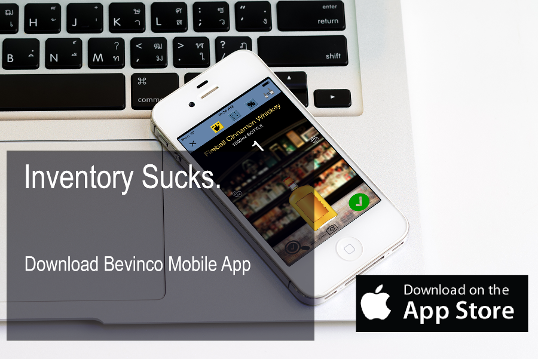Operators with growth ambitions often hit a wall in efforts to control inventory usage. It is no surprise for seasoned veterans that effective inventory management can either make or break a business.
To face this challenge, operators spend significant amounts of time and energy on selecting the right system. However, the sheer amount of different systems is vast in todays market place.
Today you have the option of buying digital scales, portion control spouts, electronic flow meters and bar inventory apps that promise to cure your liquor control problems with a simple download.
Selecting the right bar control system can sometimes can be overwhelming to an operator who just really wants something that is simple, effective and can fit into their plans to grow.
Once a system is selected, the next challenge is the amount of time and specialized effort put towards operating these systems properly.
Operators of a growing enterprise already have an extremely busy schedule and finding more time to operate an inventory system can very difficult.
In fact, effective inventory control duties can easily add a full days worth of work – maybe even more depending on the size of the inventory.
This is where outsourcing to a third party has been a preferred solution for bars and restaurants world wide that use the Bevinco bar inventory service by Sculpture Hospitality.
For over 30 years, the Bevinco system has been deployed in bars with a simple idea: auditors would come in once a week, count all the inventory, weigh all the open kegs and bottles, then make a comparison to sales to produce variance reports.
These reports are what the owners used in order to manage their staff and reduce shrinkage. Over the course of time, the Bevinco auditor and the bar owner work together in tandem, with the auditor handling the duties of weekly audits, and the owner continually holding their staff accountable for any shortages.
Despite all the choices available in the marketplace, this traditional relationship has continued to thrive and be the top choice for operators looking for an edge on their competition.
Many clients of Bevinco go through the same things before they decide to make the call and invite a third party to join their team. If you’re on the cusp of making that decision, here are 4 signs you may be ready to outsource your inventory management :
1. You have doubts about the accuracy of your present system
When it comes to counting, many systems and inventory apps use methods of measure that are based on rough estimates rather than precise measurements.
For example, there are some systems that base their measurements on “pointing” bottles or open kegs. It is basically an eyeball estimate if you’re talking about a bottle of liquor or wine. If it was half full for example, you’d record 0.5 as your on-hand inventory.
If you shook a keg, if you felt it was around 20% full, you’d assign 0.2. If each one of those estimates that is off even by a little bit, they can quickly add up to a big fortune in lost product.
Inevitably, this method will be innacurate and results will not be acted upon because of doubts in the numbers.
Secondly, all inventory systems require maintenance, and if it is not done consistently the system will not produce accurate numbers.
For month end inventory reporting for example, accountants require the on-hand inventory value at cost. This requires an accurate count, and then multiplying that inventory level by how much was paid for the product.
Every industry veteran knows how quickly the price of liquor and food inventory can change. If those prices aren’t kept up to date, the information the accountants receive is not accurate.
Many bar operators experience frustrations with a constantly changing team of managers, where only a small portion of which are detail oriented enough to keep data like this up to date.
Proper maintenance of an inventory system also involves keeping track of changes in inventory and the point of sale system.
For bars that have a large rotating stock, like craft beer or wine, this can become problematic if the system is not kept up to date. Every time a new product is brought in, the product cost must be entered into the system, and there must also be buttons programmed into the point of sale system as well.
When you take into consideration that bars with this type of concept change their menus sometimes on a weekly basis, this requires a constant vigilance to make sure the new products are accounted for in the liquor inventory control system.
2. Your present inventory controls are overly complicated, and only a few people on your team truly understand them
In the early stages of growth, what often happens is there is one person on the team who has a very elementary knowledge of excel, who designs spreadsheets that are used for inventory control purposes.
There is typically a spreadsheet created for the liquor order, there might be one for daily or weekly variance reporting, and there might be another for costing and month end inventory.
To the person who designed it, they may be easy to use. Where problems occur is when they are expected to be used by GM’s and managers who are not strong at excel, computers and problem solving. This creates a challenge when you want to grow and only one person can use your system.
It is important to have a system that is easy to learn, easy to duplicate and has leaves very little room for human error. This way, when people quit, change or take time off, the system can remain consistent because multiple people are trained on it and understand it.
When companies attempt to use internally created spreadsheets for inventory controls, their solutions often have difficulty being executed properly amongst their team.
There was one large company I worked with that had this exact scenario. Their main liquor control manager created spreadsheets and a variance control program that involved daily weigh outs and daily bottled beer counts.
This company, with over 10 locations, had a constantly rotating team of managers aged 20-30 attempting to run variance reports every day, making all kinds of mistakes, and they sometimes lost a fortune in liquor shortages.
What happened eventually was the liquor control manager essentially turned into a help-desk, where he was spending all his time teaching his staff basic excel functions and problem solving.
The spreadsheet calculations he had were accurate and his methods were precise, but only about half the managers knew how to use it properly.
3. You don’t trust the people running your system
It is no secret that staff are usually the source of shrinkage within the night club, bar and restaurant industry. When owners try to implement inventory controls internally in an effort to save money, most times what happens is the owners cannot get the staff to use the system it was designed to be used.
It really comes down to trust. The owner is always asking himself, “Can I trust these numbers?"
Prudent operators understand that numbers produced internally are very hard to trust, especially when you consider the people producing the numbers have the most to gain by manipulating them.
After all, at the end of the day they are looking out for themselves, not your business. There have been multiple situations where third party auditors have been asked to investigate situations where bartenders, managers and even other owners manipulate numbers in liquor inventory control systems, to save their own hides and to cover the tracks of theft or laziness.
In these situations, the owner is left with few options. He can either do the inventory himself (the only person he feels he can trust), or he can bring in an outsider to do it for him.
In most cases, because the owner is extremely busy with the day to day operations, he will get a third party auditors to do it for him, saving him time and also providing the peace of mind that the numbers are accurate.
4. You are spending too much time running your present system
It is normal for operators to scrutinize the methods employed by their own people and wonder if there is a better, faster way that can provide an edge. Some of the problems that owners experience when they buy a liquor control system is the sheer amount of time, energy and money their systems require.
There are many companies that employ antiquated methods that take more time than is necessary, and involve too many steps where mistakes can be made. For instance, when it comes to counting inventory, the most traditional way to conduct counts is to have a clipboard, a pen, and ideally some kind of count sheet that already has all the products listed on it.
The operator must go conduct the physical counts, write all of them on to the count sheets, calculate all the totals, then enter the information into a spreadsheet, which has all the costing information used to calculate variances.
There are cutting edge tools now that utlize barcode scanners, where inventory is scanned and identified using whatever barcode is on the product. There is no searching for where the item is on the count sheet, flipping pages, and wasting time. You scan an item, and your only task at that point is to enter how many there are or weigh it if it’s already open.
When the inventory counts are complete, the counts can be merged with costing information with the click of a button, as opposed to manually entering counts from a clipboard into a spreadsheet. This technology can cut the time it takes to count inventory in half, and it also removes the possibility of human error by doing the data entry for you.
When you utilize a system that cuts down the amount of time it takes to do the busy work of inventory control, it gives you more time to work out problems.
And yes – even with a great system, there will always be problems that require solving. There are miscounts, there are errors in data entry, there are missed deliveries from vendors, pricing errors, and incorrect drink mixes assigned to POS buttons that must be constantly tweaked.
There is always something that needs specialized attention for the system to operate smoothly. To the operator who is already short on time, this can create a big problem if they don’t have an expert on their team who can fix it.
Many operators soon find themselves in way over their head when they buy a liquor inventory control system and find out it is complex, requires constant maintenance, and has very little support.
The cold, hard truth about liquor inventory control is good systems ARE complex. They are supposed to have a lot of different moving parts, and they will typically present problems that need specialized attention.
Outsourcing liquor inventory controls has been a practical solution for bar operators who have no time or inclination to deal with these tasks themselves. Having an expert on stand by allows the owner to stay focused on operating their business, instead of conducting inventory duties which may not be the optimal use of their time.





.png)





